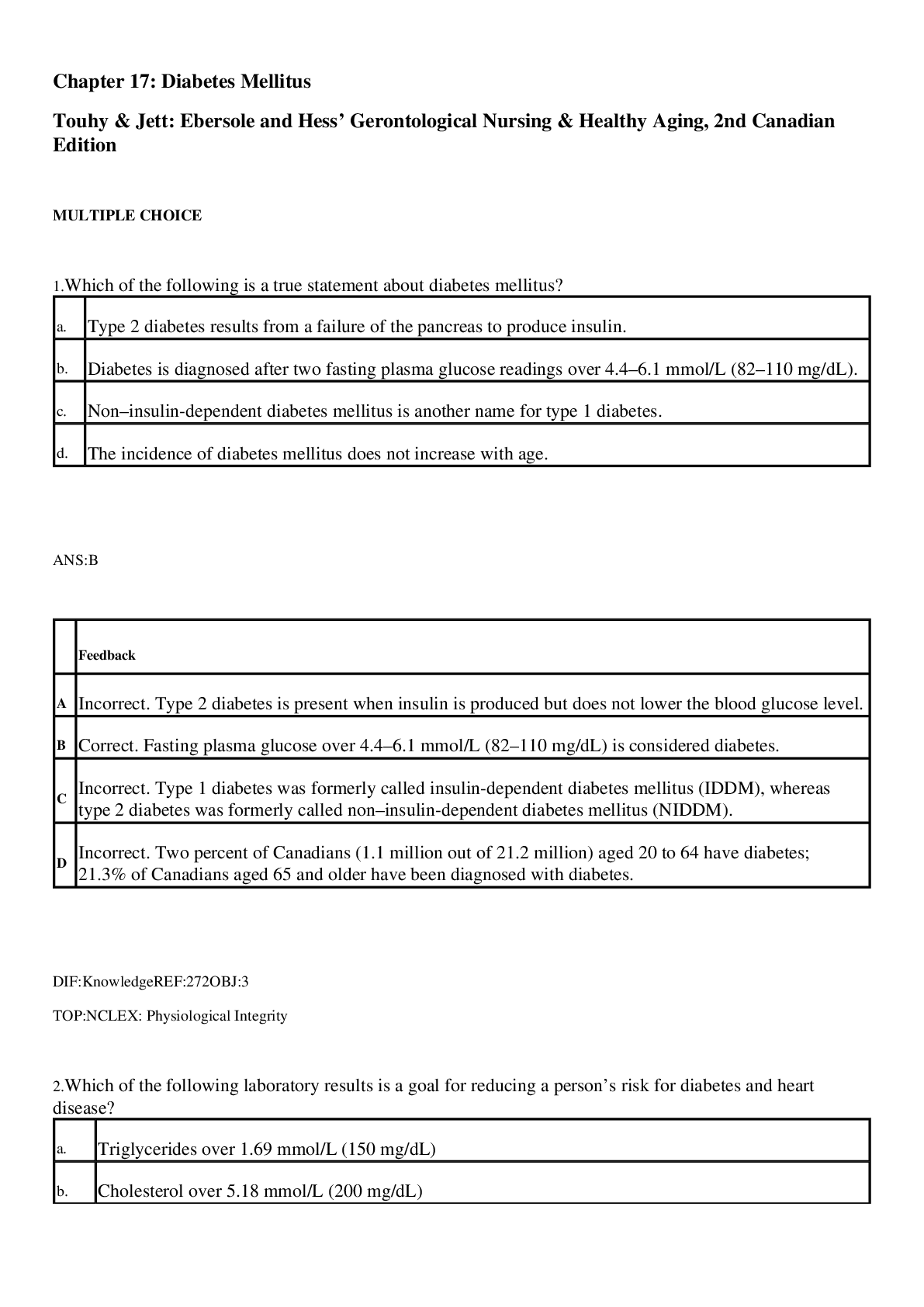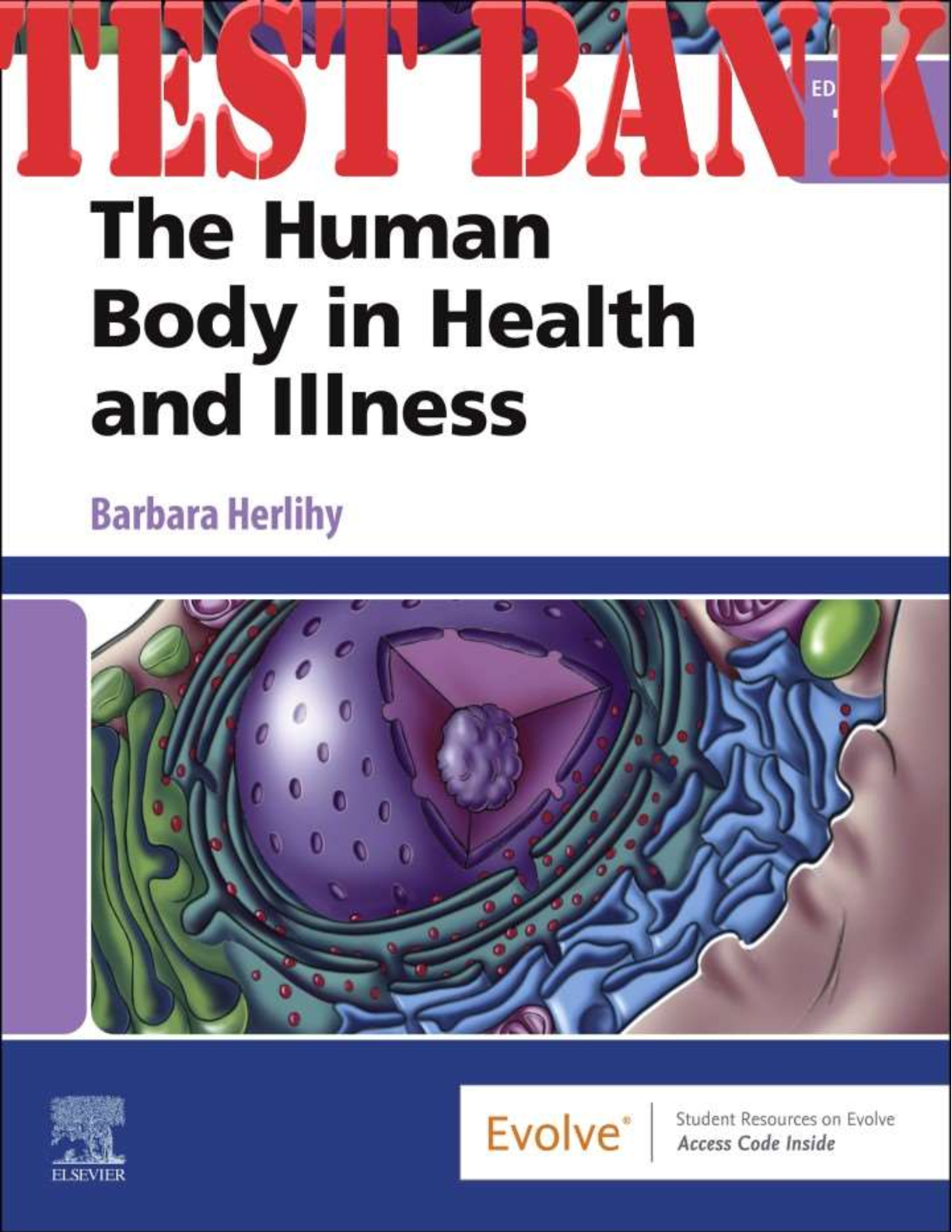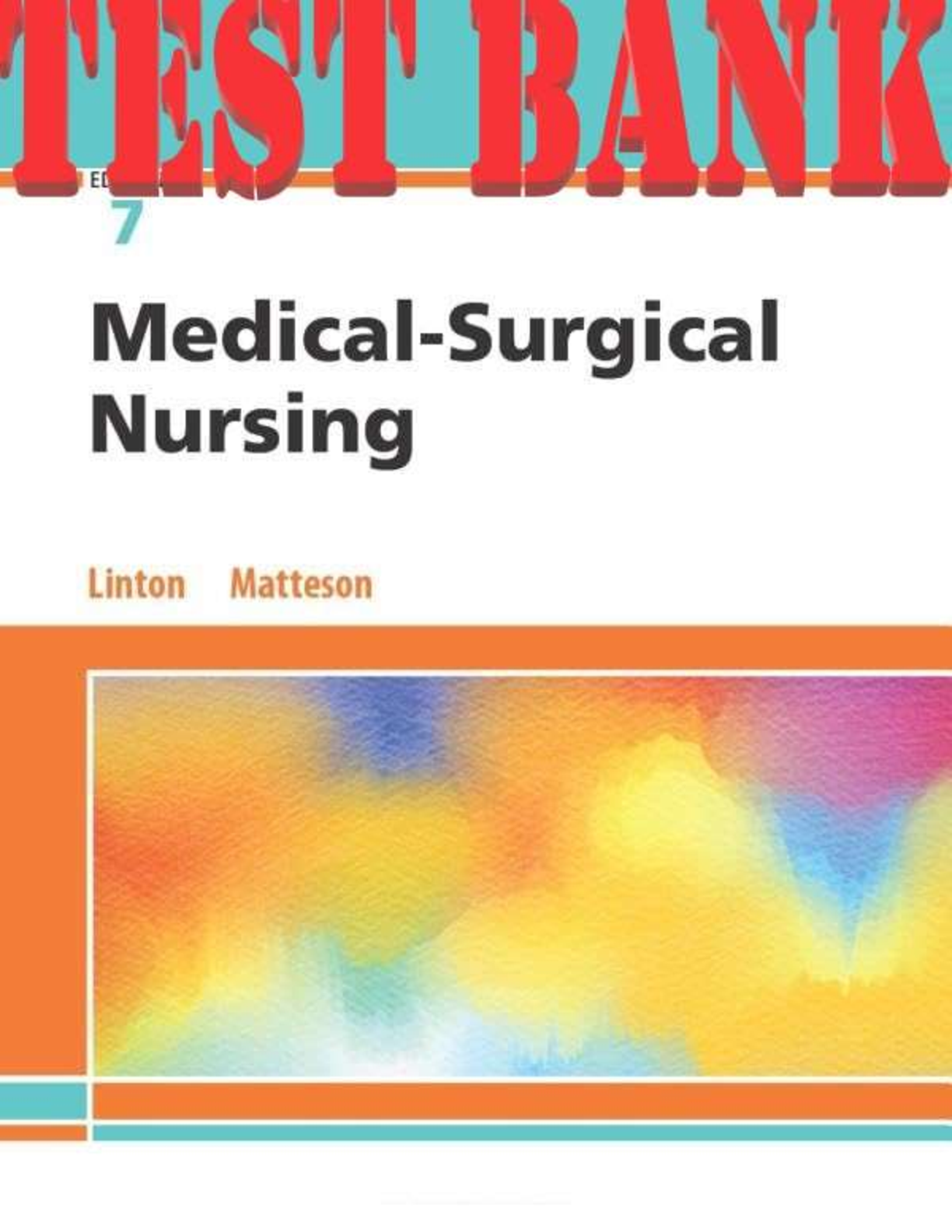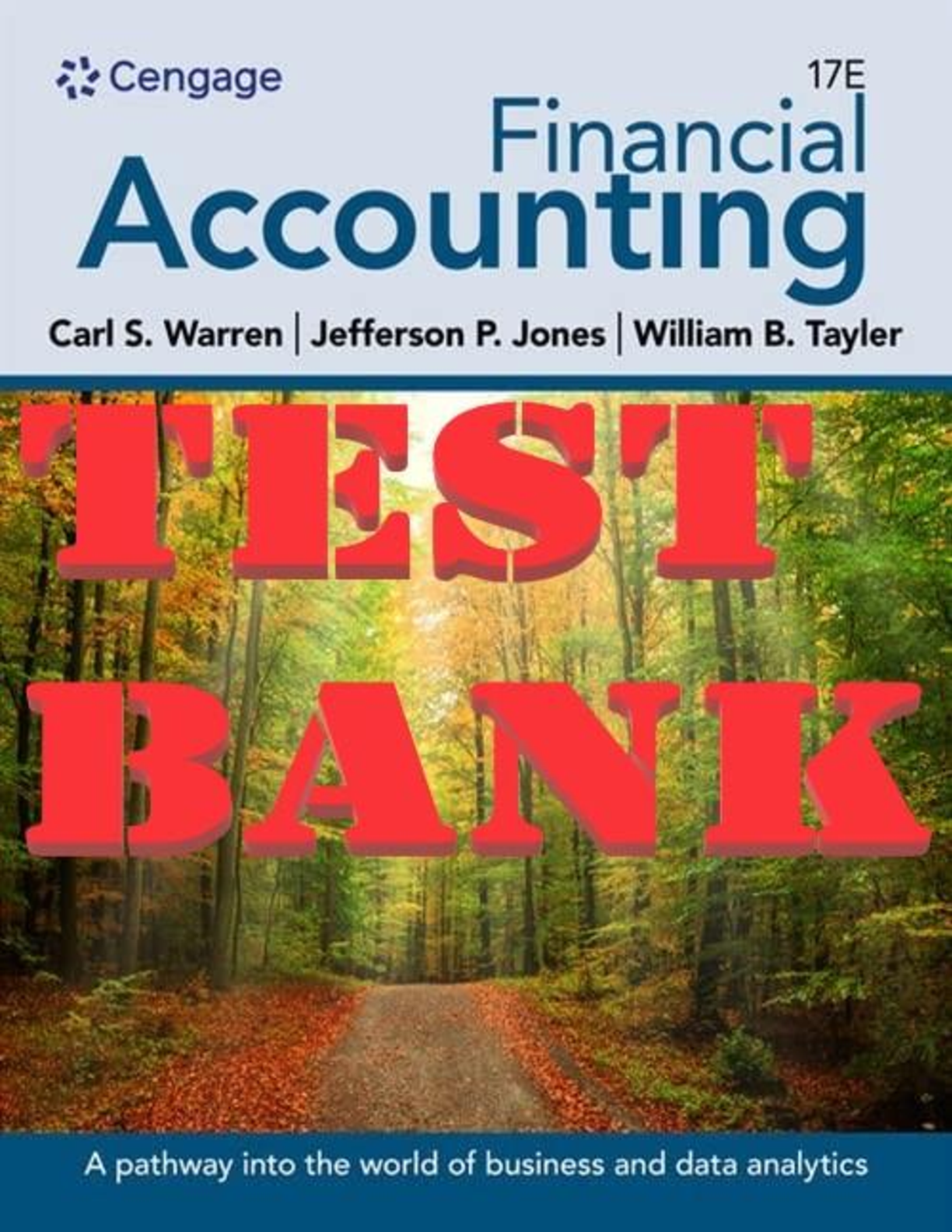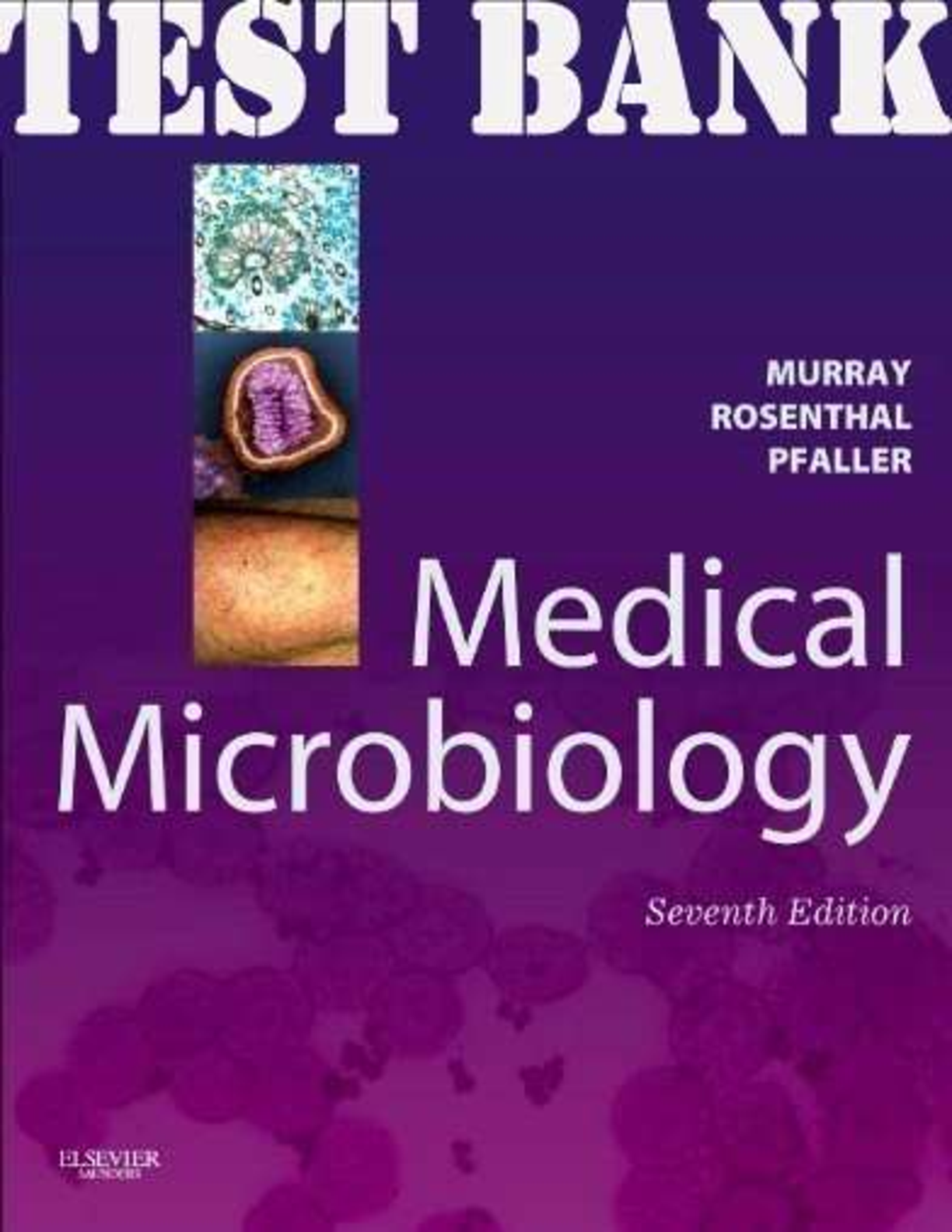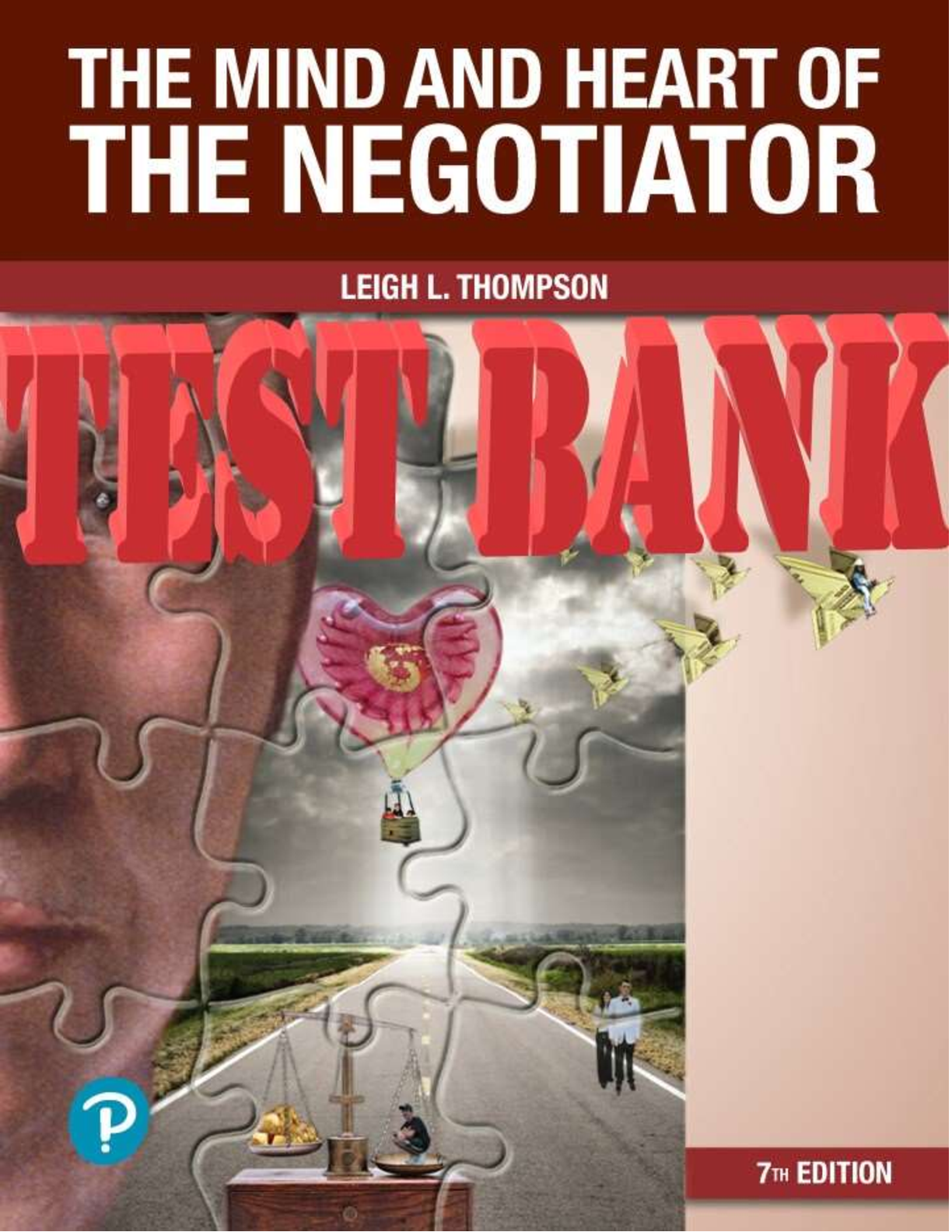*NURSING > TEST BANK > TEST BANK FOR INTRODUCTION TO CRITICAL CARE NURSING 7TH EDITION BY SOLE"Chapter 7: Dysrhythmia Inter (All)
TEST BANK FOR INTRODUCTION TO CRITICAL CARE NURSING 7TH EDITION BY SOLE"Chapter 7: Dysrhythmia Interpretation and Management
Document Content and Description Below
Chapter 7: Dysrhythmia Interpretation and Management Test Bank MULTIPLE CHOICE 1. The nurse is caring for a patient who is on a cardiac monitor. The nurse realizes that the sinus node is the p... acemaker of the heart because it is: a. the fastest pacemaker cell in the heart. b. the only pacemaker cell in the heart. c. the only cell that does not affect the cardiac cycle. d. located in the left side of the heart. ANS: A The cardiac cycle begins with an impulse that is generated from a small concentrated area of pacemaker cells high in the right atria called the sinoatrial node (sinus node or SA node). The SA node has the fastest rate of discharge and thus is the dominant pacemaker of the heart. The AV node has pacemaker properties and can discharge an impulse if the SA node fails. The ventricles have pacemaker capabilities if the sinus node or the AV node ceases to generate impulses. DIF: Cognitive Level: Comprehension REF: p. 95 OBJ: Explain the relationships between electrical and mechanical events in the heart. TOP: Nursing Process Step: Assessment MSC: NCLEX: Physiological Integrity 2. One of the functions of the atrioventricular (AV) node is to: a. pace the heart if the ventricles fail. b. slow the impulse arriving from the SA node. c. send the impulse to the SA node. d. allow for ventricular filling during systole. ANS: B The impulse from the SA node quickly reaches the atrioventricular (AV) node located in the area called the AV junction, between the atria and the ventricles. Here the impulse is slowed to allow time for ventricular filling during relaxation or ventricular diastole. The AV node has pacemaker properties and can discharge an impulse if the SA node (not the ventricle) fails. The electrical impulse is then rapidly conducted through the bundle of His to the ventricles (not the SA node) via the left and right bundle branches. DIF: Cognitive Level: Comprehension REF: p. 95 OBJ: Explain the relationships between electrical and mechanical events in the heart. TOP: Nursing Process Step: Assessment MSC: NCLEX: Physiological Integrity 3. The normal rate for the SA node when the patient is at rest is: a. 40 to 60 beats per minute. b. 60 to 100 beats per minute. c. 20 to 40 beats per minute. d. more than100 beats per minute. ANS: B The sinus node reaches threshold at a rate of 60 to 100 times per minute. Because this is the fastest pacemaker in the heart, the SA node is the dominant pacemaker of the heart. The AV node has an inherent rate of 40 to 60 beats per minute and the His-Purkinje system can fire at a rate of 20 to 40 beats per minute. Sinus tachycardia results when the SA node fires faster than 100 beats per minute. DIF: Cognitive Level: Knowledge REF: p. 97, 112 OBJ: Explain the relationships between electrical and mechanical events in the heart. TOP: Nursing Process Step: Assessment MSC: NCLEX: Physiological Integrity 4. When assessing the 12-lead electrocardiogram (ECG) or a rhythm strip, it is helpful to understand that the electrical activity is viewed in relation to the positive electrode of that particular lead. When an electrical signal is aimed directly at the positive electrode, the inflection will be: a. negative. b. upside down. c. upright. d. equally positive and negative. ANS: C When an electrical signal is aimed directly at the positive electrode, an upright inflection is visualized. If the impulse is going away from the positive electrode, a negative deflection is seen; and if the signal is perpendicular to the imaginary line between the positive and negative poles of the lead, the tracing is equiphasic, with equally positive and negative deflection. DIF: Cognitive Level: Comprehension REF: p. 98 OBJ: Explain the relationships between electrical and mechanical events in the heart. TOP: Nursing Process Step: Assessment MSC: NCLEX: Physiological Integrity 5. The patient is admitted with a condition that requires cardiac rhythm monitoring. To apply the monitoring electrodes, the nurse must first: a. apply a moist gel to the chest. b. make certain that the electrode gel is dry. c. avoid soaps to avoid skin irritation. d. clip chest hair if needed. ANS: D Adequate skin preparation of electrode sites requires clipping the hair, cleansing the skin, and drying vigorously (moisture gels are not applied). Cleansing includes washing with soap and water, or alcohol, to remove skin debris and oils. Before application, the electrodes are checked to ensure that the gel is moist. It is difficult for electrodes to adhere to the chest in the presence of chest hair. Clipping, not shaving, is recommended since shaving may create small nicks that can become a portal for infection. DIF: Cognitive Level: Application REF: p. 102 OBJ: Explain the relationships between electrical and mechanical events in the heart. TOP: Nursing Process Step: Implementation MSC: NCLEX: Physiological Integrity 6. Electrocardiogram (ECG) paper contains a standardized grid where the horizontal axis measures time and the vertical axis measures voltage or amplitude. The nurse must understand that each horizontal box indicates: a. 200 milliseconds or 0.20 seconds duration. b. 40 milliseconds or 0.04 seconds duration. c. 3 seconds duration. d. millivolts of amplitude. ANS: B ECG paper contains a standardized grid where the horizontal axis measures time and the vertical axis measures voltage or amplitude. Horizontally, the smaller boxes denote 0.04 seconds each or 40 milliseconds; the larger box contains five smaller boxes and thus equals 0.20 seconds or 200 milliseconds. DIF: Cognitive Level: Comprehension REF: p. 105 OBJ: Explain the relationships between electrical and mechanical events in the heart. TOP: Nursing Process Step: Assessment MSC: NCLEX: Physiological Integrity 7. The nurse is examining the patient’s cardiac rhythm strip in lead II and notices that all of the P waves are upright and look the same except one that has a different shape and is inverted. The nurse realizes that the P wave with the abnormal shape is probably: a. from the SA node since all P waves come from the SA node. b. from some area in the atria other than the SA node. c. indicative of ventricular depolarization. d. normal even though it is inverted in lead II. [Show More]
Last updated: 1 year ago
Preview 1 out of 37 pages
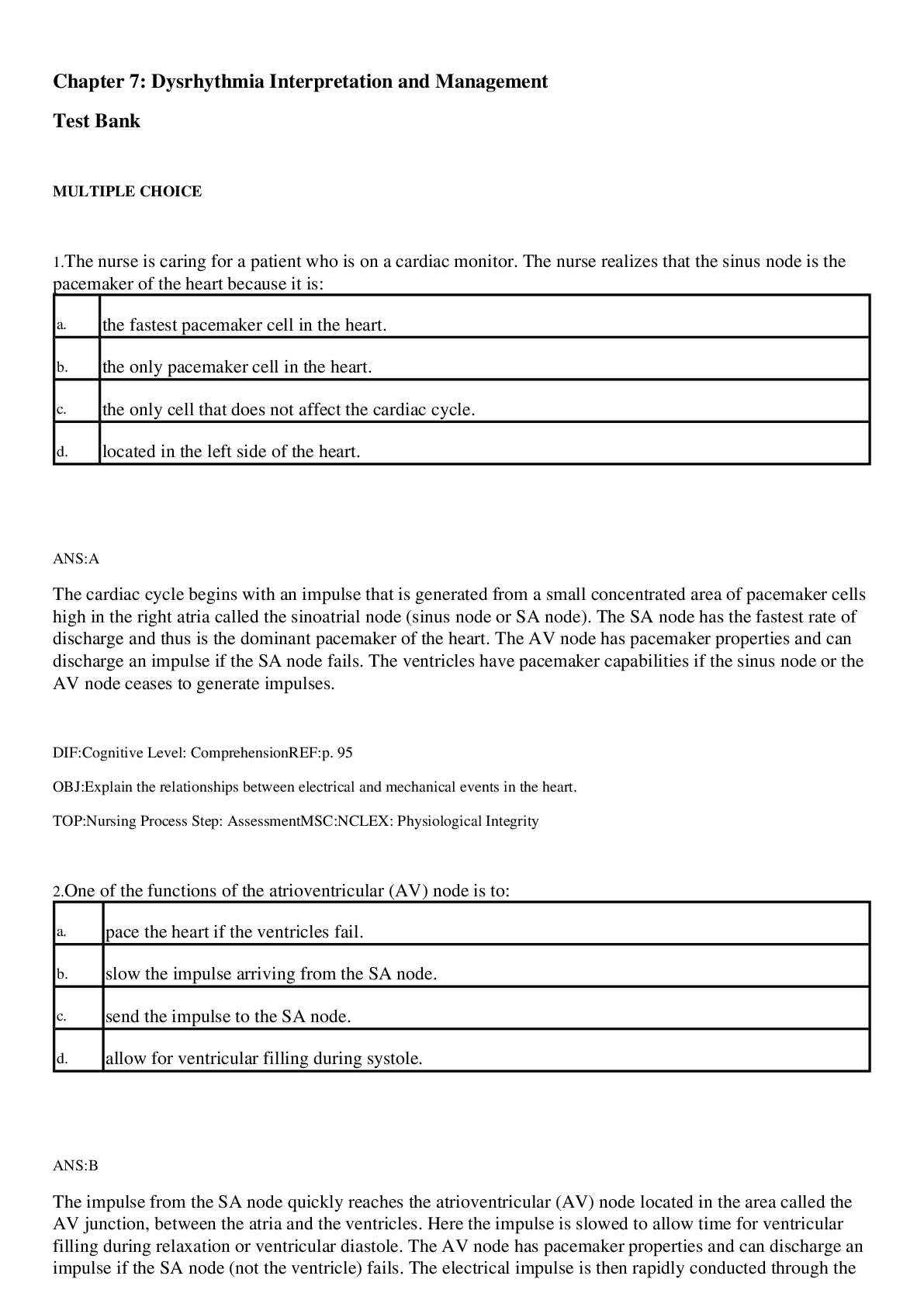
Buy this document to get the full access instantly
Instant Download Access after purchase
Add to cartInstant download
We Accept:

Reviews( 0 )
$4.50
Document information
Connected school, study & course
About the document
Uploaded On
Feb 27, 2021
Number of pages
37
Written in
Additional information
This document has been written for:
Uploaded
Feb 27, 2021
Downloads
0
Views
90



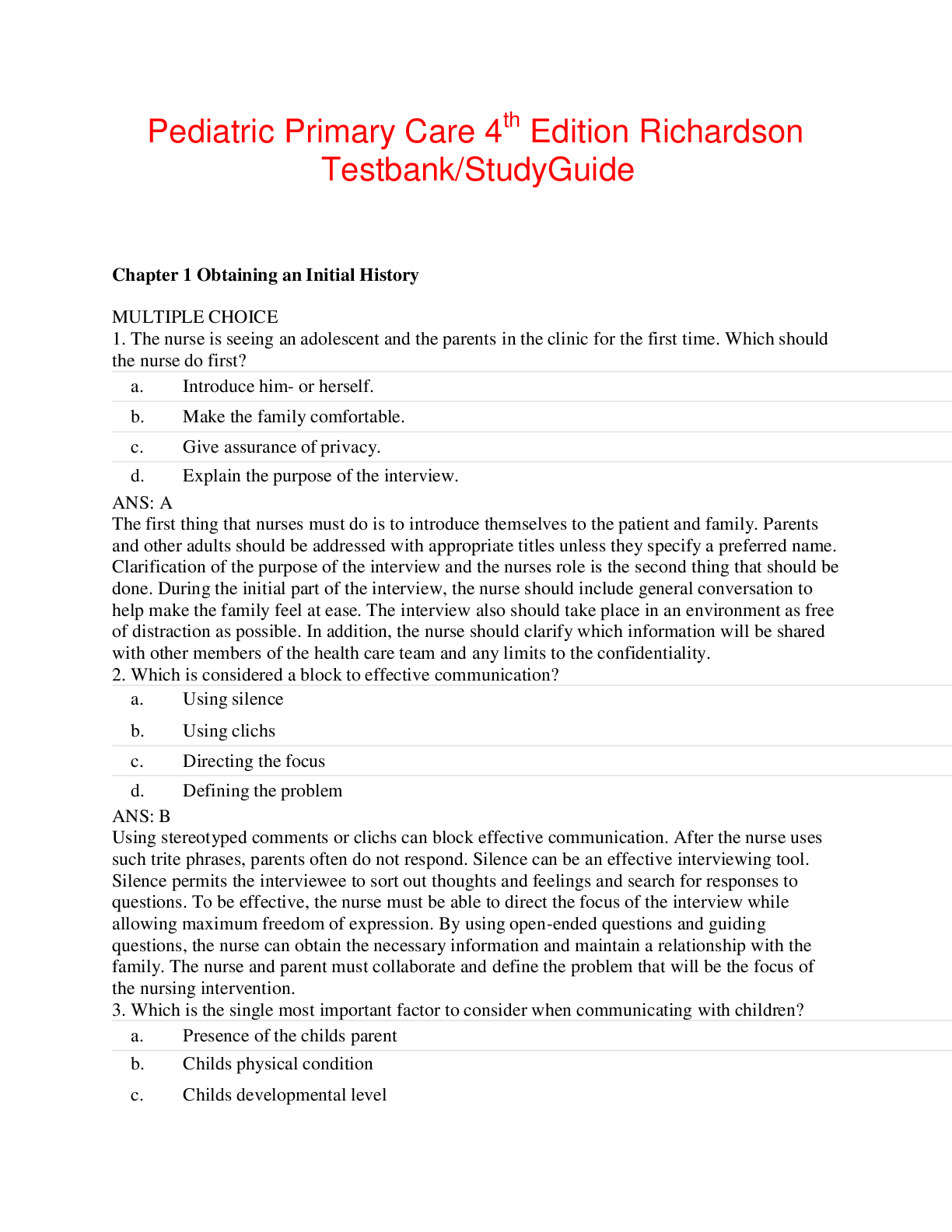

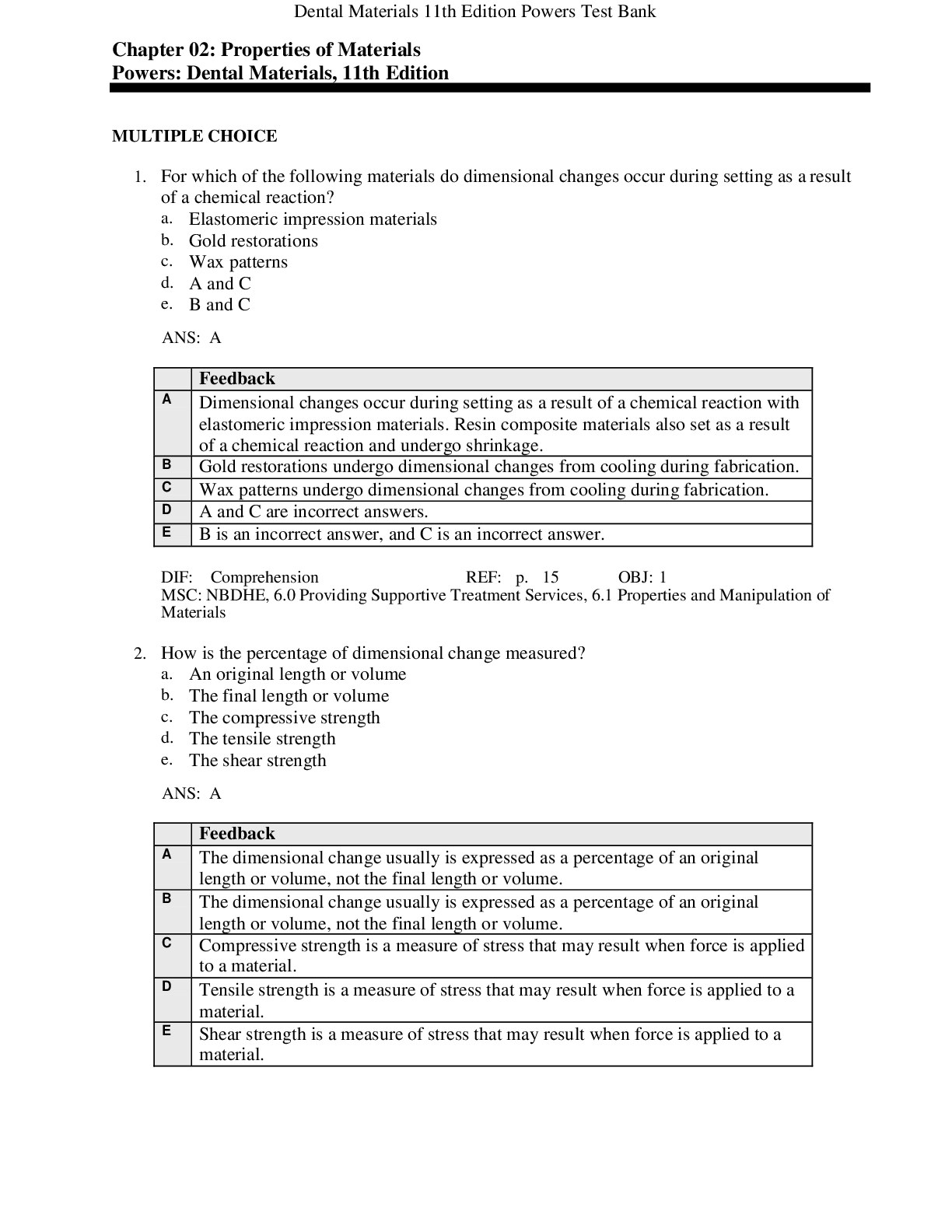
.png)
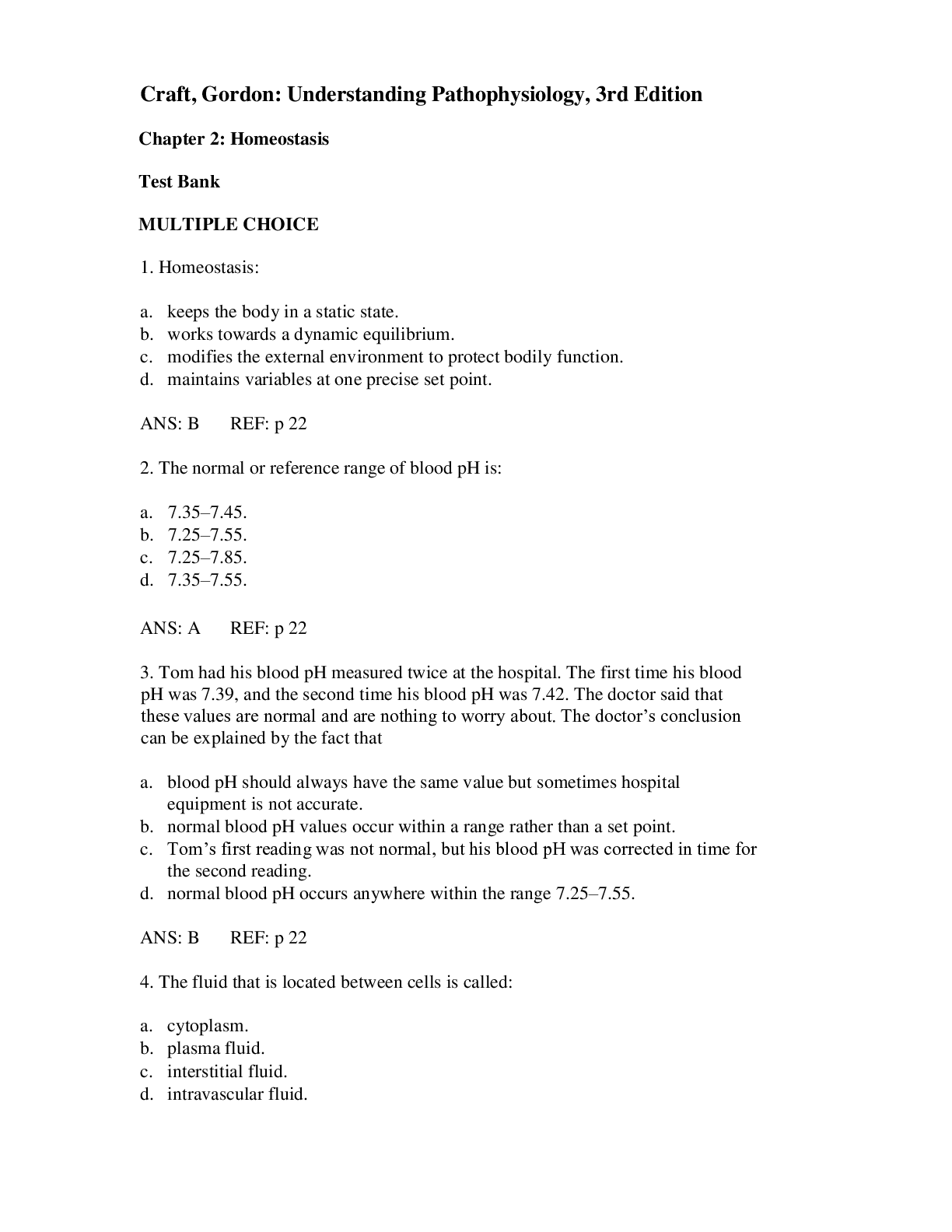



.png)
.png)
